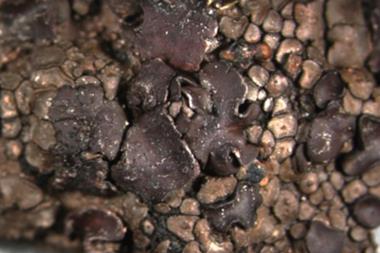Plus the danger within a coconut, and why you might stick mummified fingers in pineapple juice

Sunny, summer days inspire many folks to don swimsuits, blast beach soundtracks, and dive into the hottest seasonal read for a lounge outdoors. Time in the sun helps us make vitamin D3, but overexposure to ultraviolet (UV) light brings sunburns, premature aging and skin cancer. A popular sun safety measure is the use of sunscreens, which often contain titanium dioxide, zinc oxide, oxybenzone or octinoxate. These compounds are found in an array of body care products targeting every area from hair and scalp to the often-forgotten feet. The very prevalence of sunscreens – along with the likelihood they’ll be transferred – renders them potentially important trace evidence that can link persons, objects and places.1
Illuminating such links requires ‘statistically confident methods’ capable of assisting analysts to discern between similar products.2 Attenuated total reflectance – Fourier transform infrared (ATR–FTIR) spectroscopy, requiring little-to-no sample preparation and being non-destructive in nature, is an increasingly popular technique for a range of forensic applications and often paired with chemometrics.3–5 Researchers at Panjab University’s Institute of Forensic Science & Criminology in India have shown the potential of ATR–FTIR spectroscopy paired with principal component analysis to discriminate between sunscreen products.6 For their pilot study, the researchers analysed over 100 sunscreens directly and developed a model capable of accurately distinguishing all unknown samples. Work evaluating sunscreens transferred onto a limited range of substrates suggests it is also possible to classify sunscreen traces, but a more extensive substrate study is needed.
Essential hydration
After a day outdoors, sun-goers often reach for body care products promising hydration to soothe dry and heat irritated skin. In forensic science, speciality formulations are also used to treat dehydrated dermal tissue, though the goal is identification. Mummified finger pads – due to shrinkage, shrivelling, and rigidity – may have no visible ridge detail. Rehydration of finger dermal tissue can ‘restore the pliability critical for accurate prints’ and enable fingerprint identification. Common rehydration techniques – such as one involving a 3% NaOH solution – can damage tissues. Seeking a gentler method, a multi-institution team that included the Los Angeles County Medical Examiner–Coroner’s Office turned to methods of chemical meat tenderisation ‘performed by cultures throughout the world for millennia’.7 Specifically, the use of papaya and pineapple fruits and extracts.
Both fruits contain enzymes that hydrolyse proteins – papain in papaya and bromelain in pineapple. These enzymatic actions lead to the ‘loosening up’ (degradation) of muscle tissue. Noting this tenderising ability, researchers investigated the use of papaya and pineapple juices to help rehydrate finger dermal tissue ‘to capture quality fingerprint features’. Both juices enabled suitable prints to be collected, suggesting more caustic reagents can be avoided while using inexpensive, readily available materials. Pineapple juice outperformed papaya juice, prompting researchers to recommend its use and propose further work exploring the solo use of pineapple’s bromelain.
Coconut concerns
Sipping coconut water directly from a coconut while poolside or beachside, in a chic cafe or casually at home, can certainly put one in the summer mood. Unfortunately, consuming coconut water put one Danish man in mortal danger.8 Upon drinking from a store-bought prepared coconut complete with straw, the man noted a foul taste and ceased drinking. He cracked open the coconut, noting a ‘slimy’ and ‘rotten’ looking interior. Within five hours he was a patient in Denmark’s Aarhus University Hospital, suffering from a range of symptoms including nausea, vomiting, sweating, confusion, involuntary muscle contractions (dystonia) and poor balance. Another two hours saw the patient transferred to intensive care with additional symptoms including a fever. A variety of tests revealed little, and no treatments seemed to help. About a day after being admitted, the patient died.
That foul tasting coconut water pointed to a poison, but it was not one commonly encountered in either real life or the hottest summer crime fiction. Eventually, a team including members from the hospital, Aarhus University, the US Food and Drug Administration and Denmark’s Statens Serum Institut, identified the fatal poison as 3-nitropropionic acid (3-NPA). It wasn’t slipped into the coconut water by an enemy, but by the fungus Arthrinium saccharicola. A neurotoxin, 3-NPA is behind a rash of moldy sugar cane poisonings that cause severe inflammation of the brain (encephalopathy), leading to other maladies including dystonia.9,10 Once 3-NPA was pinpointed, the patient’s blood was reexamined and the toxin was found. Analysis of the coconut sample also revealed 3-NPA within.
In the case of mouldy sugar cane – and it seems this coconut case – storage conditions known to promote mould growth saw A. saccharicola take hold and unleash the dangers of 3-NPA. Mishaps, missteps and mistakes are common in food safety as in sun safety. The best we can do this summer – and all year long – is try our best to minimise risks.
References
1 R Chophi et al, Forensic Chem., 2019, 14, 100165 (DOI: 10.1016/j.forc.2019.100165)
2 A Weber et al, Anal. Chem., 2023, 95, 167 (DOI: 10.1021/acs.analchem.2c05094)
3 K Alkhuder, Int. J. Legal Med., 2022, 136, 1717 (DOI: 10.1007/s00414-022-02882-2)
4 S Farid et al, Opt. Laser Technol., 2021, 135, 106704 (DOI: 10.1016/j.optlastec.2020.106704)
5 C Nimi et al, J. Forensic Sci., 2022, 67, 911 (DOI: 10.1111/1556-4029.14998)
6 A Angrish et al, Spectrochim. Acta A Mol. Biomol. Spectrosc., 2020, 242, 118708 (DOI: 10.1016/j.saa.2020.118708)
7 F Fernandez et al, J. Forensic Sci., 2022, 67, 735 (DOI: 10.1111/1556-4029.14905)
8 T Birkelund et al, Emerg. Infect. Dis., 2021, 27, 278 (DOI: 10.3201/eid2701.202222)
9 H Bendiksen Skogvold et al, J. Appl. Toxicol., 2022, 42, 818 (DOI: 10.1002/jat.4259)
10 A C Ludolph et al, Can. J. Neurol. Sci., 1991, 18, 492 (DOI: 10.1017/s0317167100032212)

















No comments yet